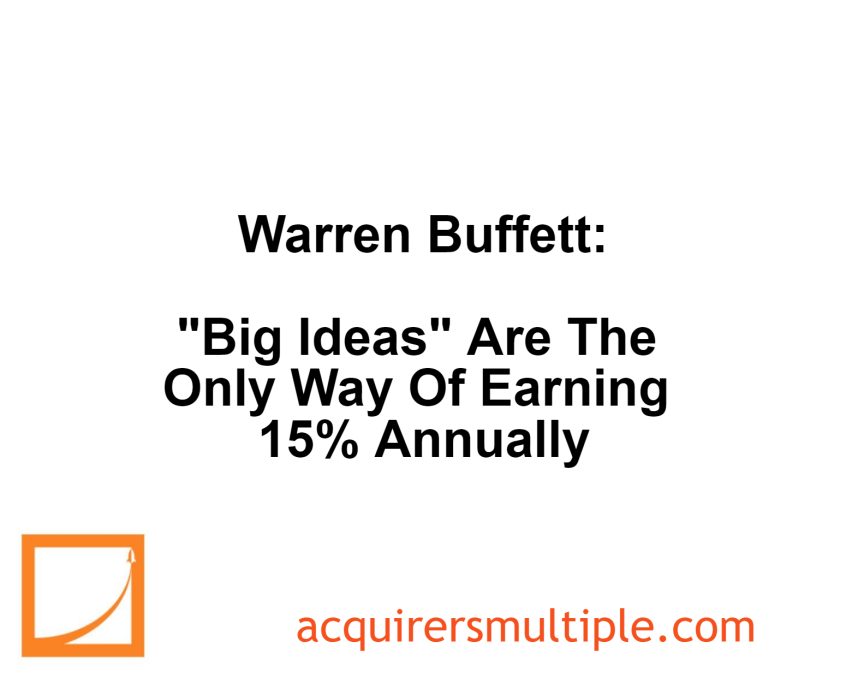In his 1984 Berkshire Hathaway Annual Letter, a year in which Berkshire Hathaway’s net worth increased by $152.6 million, or 13.6%. Warren Buffett explained why “big ideas” were the only way to help the company achieve its long-term goal of earning 15% annually. Here’s an excerpt from the letter:
Using my academic voice, I have told you in the past of the drag that a mushrooming capital base exerts upon rates of return. Unfortunately, my academic voice is now giving way to a reportorial voice.
Our historical 22% rate is just that – history. To earn even 15% annually over the next decade (assuming we continue to follow our present dividend policy, about which more will be said later in this letter) we would need profits aggregating about $3.9 billion.
Accomplishing this will require a few big ideas – small ones just won’t do. Charlie Munger, my partner in general management, and I do not have any such ideas at present, but our experience has been that they pop up occasionally. (How’s that for a strategic plan?)
===
On the dividend policy mentioned above, Buffett argues that Berkshire Hathaway’s dividend policy has been beneficial to shareholders because it has allowed the company to reinvest its earnings in better businesses, which has ultimately led to higher shareholder value. Here’s another excerpt from the letter:
Let’s now turn to Berkshire Hathaway and examine how these dividend principles apply to it. Historically, Berkshire has earned well over market rates on retained earnings, thereby creating over one dollar of market value for every dollar retained. Under such circumstances, any distribution would have been contrary to the financial interest of shareholders, large or small.
In fact, significant distributions in the early years might have been disastrous, as a review of our starting position will show you. Charlie and I then controlled and managed three companies, Berkshire Hathaway Inc., Diversified Retailing Company, Inc., and Blue Chip Stamps (all now merged into our present operation). Blue Chip paid only a small dividend, Berkshire and DRC paid nothing.
If, instead, the companies had paid out their entire earnings, we almost certainly would have no earnings at all now – and perhaps no capital as well. The three companies each originally made their money from a single business: (1) textiles at Berkshire; (2) department stores at Diversified; and (3) trading stamps at Blue Chip.
These cornerstone businesses (carefully chosen, it should be noted, by your Chairman and Vice Chairman) have, respectively, (1) survived but earned almost nothing, (2) shriveled in size while incurring large losses, and (3) shrunk in sales volume to about 5% its size at the time of our entry. (Who says “you can’t lose ‘em all”?)
Only by committing available funds to much better businesses were we able to overcome these origins. (It’s been like overcoming a misspent youth.) Clearly, diversification has served us well.
You can read the entire letter here:
1984 Berkshire Hathaway Annual Letter
For all the latest news and podcasts, join our free newsletter here.
Don’t forget to check out our FREE Large Cap 1000 – Stock Screener, here at The Acquirer’s Multiple:




